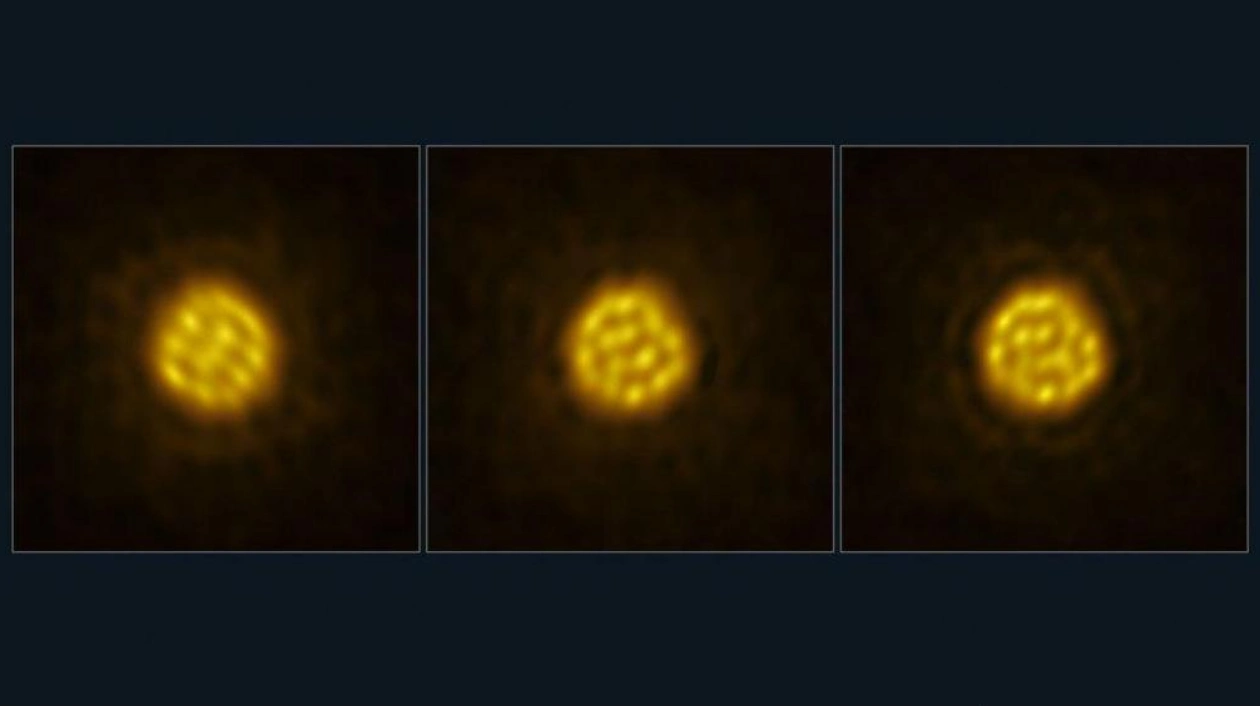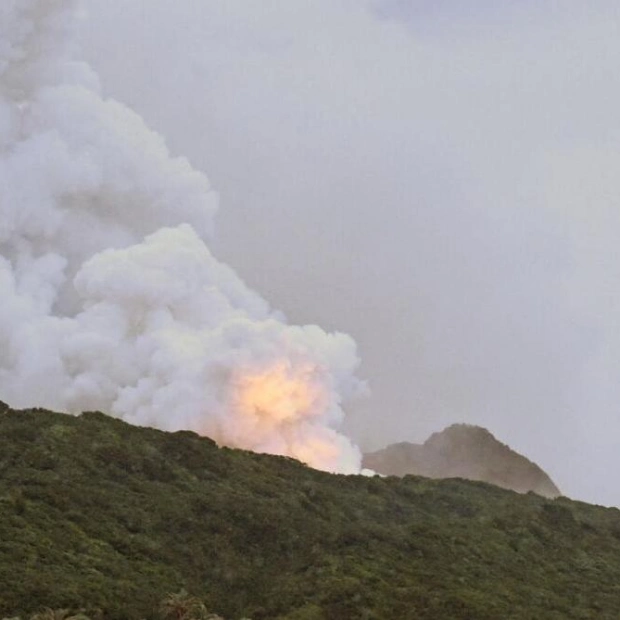For the first time, astronomers have observed gas boiling and bubbling on the surface of a distant star. Scientists monitored the red giant star R Doradus using the Atacama Large Millimeter/submillimeter Array (ALMA) in Chile over a four-week period in July and August 2023. The series of images captured large cells of gas rising to the star’s surface and then sinking again, as reported by the team in Nature on September 11.
These bubbles are indicative of convection, the process that transports heat and energy within stars. “It’s somewhat akin to the principle of a lava lamp or boiling water,” explains astronomer Wouter Vlemmings from Chalmers University of Technology in Gothenburg, Sweden.
Similar convective bubbles have been observed on other giant stars, but this is the first time their speeds and movements have been tracked on a star other than the sun. R Doradus, located about 180 light-years from Earth, is nearing the end of its life cycle. During this process, it has expanded to about 350 times the width of the sun, despite having a similar mass.
The convective cells on R Doradus’s surface are correspondingly massive, with each cell spanning 75 times the width of the sun. These cells rise and fall within the star at speeds of about 20 kilometers per second, which is 60 times the speed of sound. This is faster than astronomers anticipated based on solar convection, and fast enough that a small portion of the gas could potentially escape into space.
These observations, along with others like them, could shed light on the origins of the elements that form stars, planets, and even humans. “Most of the stardust that becomes new objects comes from stars like the one we studied,” says Vlemmings. “However, the process of how this occurs is still not fully understood. We want to uncover the physics, the specifics of how this process works.”
Questions or comments on this article? E-mail us at feedback@sciencenews.org | Reprints FAQ
W. Vlemmings et al. One month convection timescale on the surface of a giant evolved star. Nature. September 11, 2024. doi: 10.1038/s41586-024-07836-9.
Lisa Grossman is the astronomy writer. She holds a degree in astronomy from Cornell University and a graduate certificate in science writing from the University of California, Santa Cruz. She resides near Boston.
We are at a critical juncture, and supporting climate journalism has never been more crucial. Science News and our parent organization, the Society for Science, need your support to enhance environmental literacy and ensure that our response to climate change is grounded in scientific understanding.
Please subscribe to Science News and consider adding $16 to expand science literacy and comprehension.






